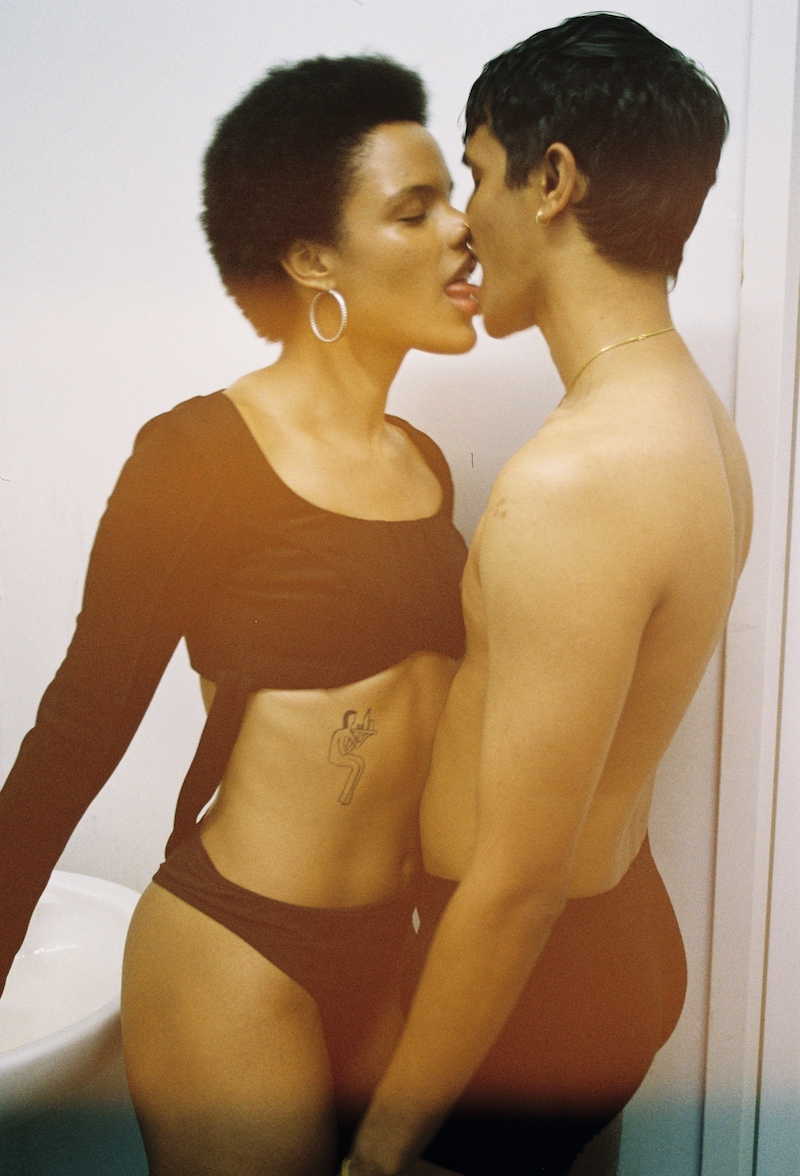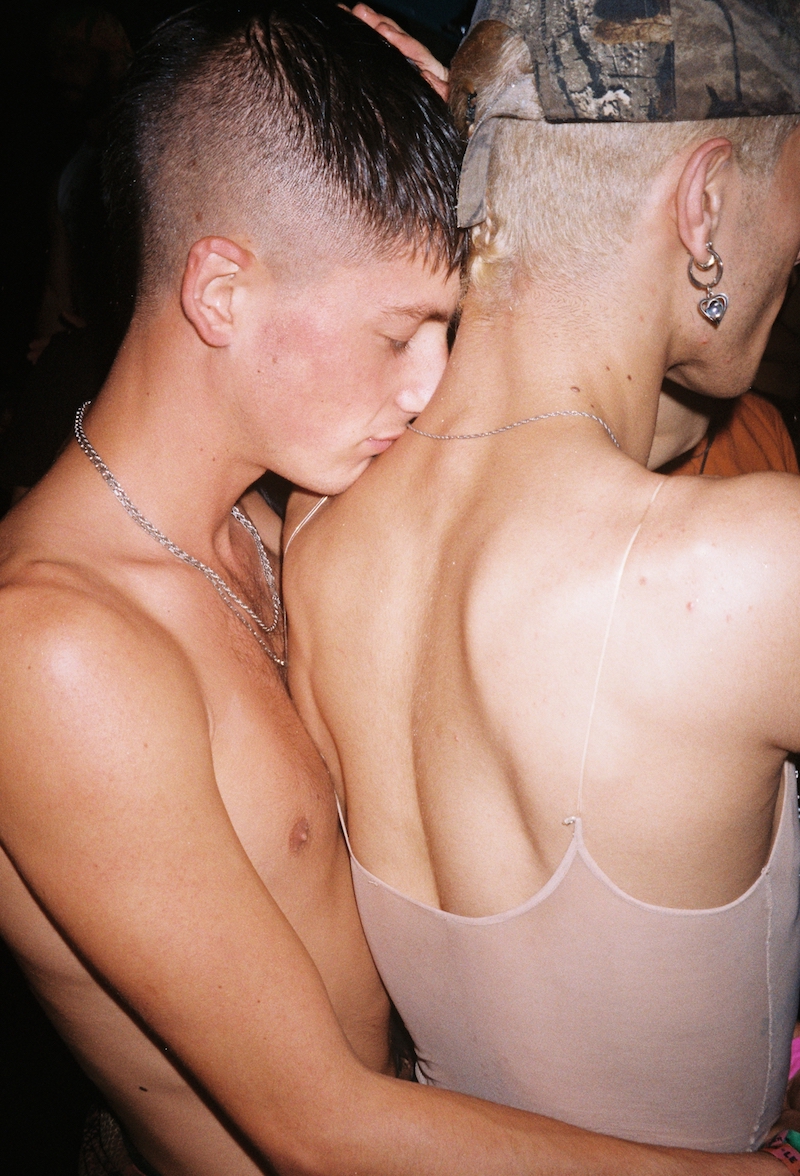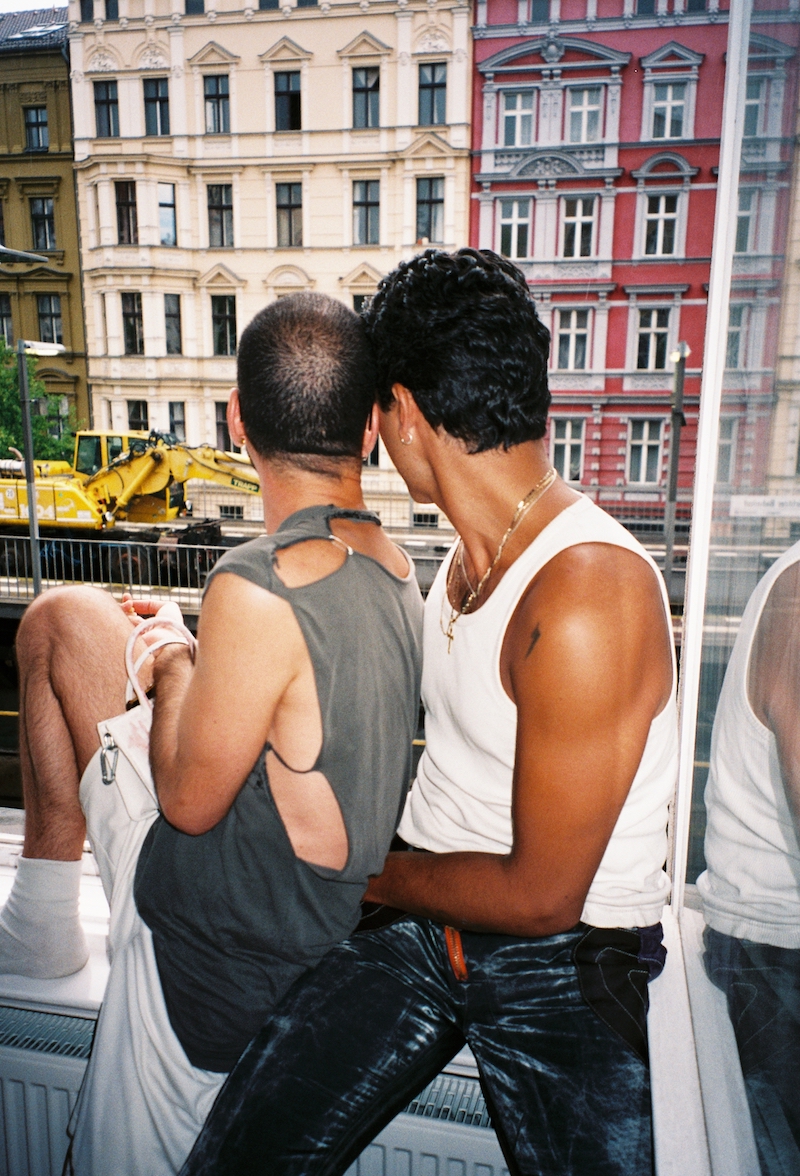by Nadia Egan // Sept. 19, 2023
This article is part of our feature topic Privacy.
Berlin-based, Greek photographer Spyros Rennt has garnered substantial recognition in recent years for his evocative photographs that beautifully chronicle the queer youth culture thriving within the city. Rennt’s photography effectively distills the very core of this subculture, with his online portfolio and various books serving as an open invitation for viewers to closely immerse themselves in its world. In essence, Rennt’s body of work constitutes a pure and unfiltered compilation of moments that not only elevate the presence of queer culture, but serve as an archive for the zeitgeist of this particular scene.
In the earlier months of this year, Rennt self-published his third and latest book, ‘Corporeal’—a compilation enriched with 150 new images portraying his circle of friends and beloveds. Given that a significant portion of these photographs were taken during the pandemic, circumstances led many of his subjects indoors, resulting in shots taken within their personal sanctuaries. In an era where privacy is a precious and rare commodity, ethical considerations often arise regarding the act of capturing individuals in their most vulnerable states. As intimacy remains a prevailing motif throughout Rennt’s body of work, we sat down together to engage in a thoughtful conversation about his approach towards finding the fine line between capturing authentic moments and preserving the dignity of his subjects.

Spyros Rennt: ‘Vincent & Mika at Peter’s,’ 2020 // Courtesy of the artist
Nadia Egan: Your latest book, ‘Corporeal,’ captures intimate moments between your friends and loved ones, often in private spaces. How do you navigate the delicate balance between capturing something authentic and respecting your subjects’ privacy?
Spyros Rennt: I would say that, in general, the book is not exclusively focused on super private and intimate moments. It encompasses various themes, although intimacy is of course a topic that interests me. Those featured in the book are individuals who genuinely have faith in both me and my vision. I’ve also been lucky enough to photograph individuals who I previously didn’t know too well, yet they understood the essence of what I do and supported the vision.
It’s never been in my interest to create a gossipy publication, and my photographs are never incriminating or something that brings the person down or makes them look bad or weird in any way. The focus always remains on capturing something pure and honest, something beautiful and authentic; something that can be achieved while observing your friends.

Spyros Rennt: ‘Neukölln winter afternoon,’ 2022 // Courtesy of the artist
NE: The power dynamic between the photographer and the subject can sometimes influence the perception of privacy. How do you approach this dynamic in your work?
SR: The majority of the time I am photographing close friends, so in that sense it is somewhat different. However, when photographing someone that you don’t know as well, you just have to somehow win their trust. I think that this trust-building depends on communication, and I think that, in general, my photography becomes like an extension of my social skills, somehow.
It often works that you meet someone and you show them the work, and as they start to understand the photography, they will also start to understand and appreciate what you do. And then they will see that you want them to be a part of it. As I previously said, it’s a lot about communication and working with the subject in order to gain trust. Whether it’s someone you know or someone you just met, there’s always certain boundaries that won’t be crossed.

Spyros Rennt: ‘Ismael & Antonio,’ 2022 // Courtesy of the artist
NE: Some critics argue that capturing private moments can exploit the vulnerability of the people you photograph. How would you respond to this kind of critique?
SR: How does one define vulnerability? From my perspective, it’s more a celebration of the subjects and lifestyles that I photograph, rather than any form of exploitation. The essence lies in presenting genuine moments rather than capitalizing on anything or anyone. Typically, these are my relationships that I expose, where I have cultivated trust with the individual being photographed.
Nowadays, everybody is aware of how images work and how they are transmitted. We are living in Berlin, and my subjects are very much individuals leading a modern life. We are not talking about marginalized communities, but rather those who are around the same age as us, our peers. This leaves no room for exploitation, so to speak.

Spyros Rennt: ‘Vinu & Lisa kiss,’ 2022 // Courtesy of the artist
NE: The subjects of your photographs are predominantly queer individuals. How do you address the unique privacy concerns that might arise within the queer community when you consider the historical and ongoing struggles for acceptance and safety?
SR: My work is very much about giving visibility. I think that there’s either that option or, I wouldn’t say remaining hidden, but you get the gist… I think that’s what myself and my photographs are very much about—highlighting queer individuals. I think that queerness is also sort of taking over, or at least spilling into the mainstream. Because of this I don’t feel that there are safety concerns in this aspect.

Spyros Rennt: ‘Whole Festival embrace,’ 2022 // Courtesy of the artist
NE: With increased digitalization, privacy is increasingly challenged. How would you address concerns about potential exploitation or misuse of the photographs you take?
SR: This is actually why I make a book—a physical product—that’s harder for someone to get their hands on. But then again, I don’t feel that the themes inside are overly sensitive. My photographs also have a focus on portraiture. There is a lot of anonymity in the scenes, I capture. I’m interested in creating images where the faces are obscured—where you see the body and understand the situation, but you don’t quite see who is doing it. This is also a way to expose someone less.

Spyros Rennt: ‘Enad & Sam,’ 2020 // Courtesy of the artist
NE: In your opinion, how does your work contribute to the larger conversations surrounding privacy, representation and the queer experience?
SR: I definitely try to contribute to queer visibility because I think that the queer experience should be celebrated, and I’m interested in creating a record of the times we live in and that we experience. It’s always fascinated me to look at the work of other photographers, such as Wolfgang Tillmans and Nan Goldin, who manage to give you the feeling of that era. That’s also what I aim to do with my work.
While it should always be done with consent and an awareness of this being a document and something that stays, if we don’t do that, then somehow these things get lost with time.
























